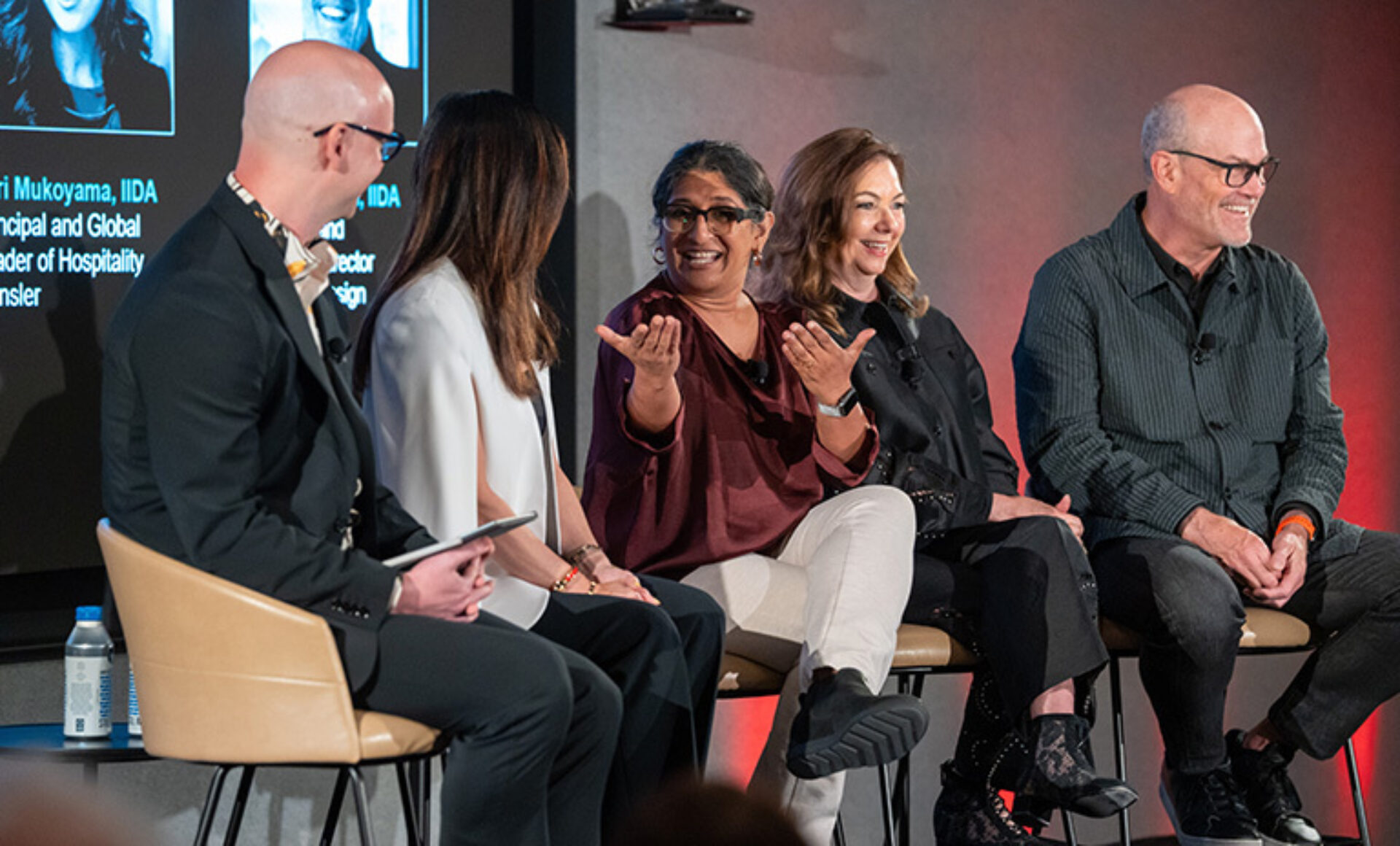An effective educator will not only ensure that students leave their care with a comprehensive understanding of the subject matter, but if they’ve done their job well, they will have a lifelong impact on the way that their students view the world around them. Our 2023 Educator Diversity awardee, Dr. Asha Kutty, an assistant professor of Interior Architecture at the University of North Carolina Greensboro, does just that.
Colleague and peer Tina Patel says, “Dr. Kutty's body of work delves into the intricate relationship between cultural identity and community spaces. Her research has consistently shown that these spaces often serve as a counterpoint to dominant groups, providing marginalized communities with the means to express themselves.”
Through her work, Kutty has exposed students to the importance of designing through a wide lens, and investigating how different communities and diverse peoples might interact with the spaces once designed. Her research into Milwaukee’s African American storefront churches and their dual role in providing access to healthcare for vulnerable communities shows students how leaning on communities can provide better design solutions that serve the needs of the people who will occupy the spaces.
Former student Ruth Hullette shared that she was growing frustrated with the feeling that she was mostly being exposed to designing luxury spaces for wealthy clients in school, but that “Dr. Kutty taught me that design is so much more than luxury. It is a tool to advocate for and empower others—and if used correctly, for fighting for those around me.”

Assistant Professor of Interior Architecture
University of North Carolina Greensboro
Can you tell us a little bit about your focus and how you approach interior design education?
Asha Kutty: My focus lies in exploring how the built environment impacts minority communities and examining the ways in which these communities navigate and challenge marginalization through their creative engagement with their physical surroundings. After spending many years as a student, I struggled to find a supportive network of mentors and colleagues who shared my vision and beliefs. However, my path led me to the University of North Carolina Greensboro, an institution that aligns with my values. It's a minority-serving institution with a strong commitment to diversity, inclusion, and fostering open communication. Here at UNCG, I've found a supportive environment that embraces scholarship, mentorship, and pedagogical approaches that resonate with my own. I've found this both in my own department, and also others that I have had the opportunity to collaborate with, like the African American Diaspora Studies Program. It's become a home base where I can pursue my research interests and teaching philosophy with the backing of a community that shares my values and encourages my growth.
The cornerstone of my educational philosophy lies in the belief that as interior design educators, we should conduct research to truly understand the lives of marginalized communities, whether due to race, economics, or other factors. By "lives," I mean delving into their lived experiences, daily routines, significant events, celebrations, family dynamics, and communal interactions within the spaces they inhabit—in essence, understanding their culture. This approach involves asking crucial questions: What are their needs, passions, and desires concerning the design of their built environment? How do their cultural practices intersect with the built environment? To gain insights into these aspects, collaboration with experts from the humanities becomes invaluable. By fostering a deep understanding of the cultural contexts and lived experiences of marginalized communities, we can better tailor our design approaches to meet their needs and empower them to actively engage with and shape their built environments.


Can you share something that you are particularly proud of in your career?
AK: One particularly meaningful achievement in my career as an educator occurred in the spring of 2023 when my students' work was featured in an exhibition at the International Civil Rights Center & Museum in Greensboro, North Carolina. The exhibition showcased the culmination of a design studio project where students were tasked with creating a museum honoring the life and showcasing the tragic death of Eugene Hairston, Guilford County's sole documented lynching victim during segregation. This exhibition was an integral part of Guilford County's initiative to facilitate discussions on racial atrocity and promote racial healing within the community. Collaborating closely with scholars from the African American Diaspora Studies program, the students crafted their designs, drawing from deep research and thoughtful consideration of the historical and cultural context.
For me, this moment was significant on multiple levels. It represented the realization of my values as an educator and my commitment to fostering meaningful dialogue on sensitive topics through design. Collaborating with scholars whose expertise and passion inspired me was immensely rewarding. Witnessing the personal growth of my students as they grappled with their own racial identities and connected their learning to design applications was truly gratifying. Finally, being part of a larger collective effort to address racial injustice through education and design was very fulfilling.
What excites me the most is the prospect of watching my students flourish and evolve into leaders in both education and industry…equipped with a sound education in diversity, equity, and inclusion in design.
Dr. Asha Kutty
What does winning this award mean to you?
AK: Winning this award holds significant meaning for me on both a personal and professional level. It's a source of genuine happiness to see my work acknowledged and celebrated. Moreover, this recognition comes at a pivotal moment when there's a growing emphasis on diversity, inclusion, and equity in design. Moving forward, I'm eager to continue the work I've been doing. But what excites me the most is the prospect of watching my students flourish and evolve into leaders in both education and industry. I'm passionate about seeing them equipped with a sound education in diversity, equity, and inclusion in design, and I'm hopeful that they'll play a pivotal role in transforming these concepts from mere add-ons to foundational pillars within the field of interior design.






